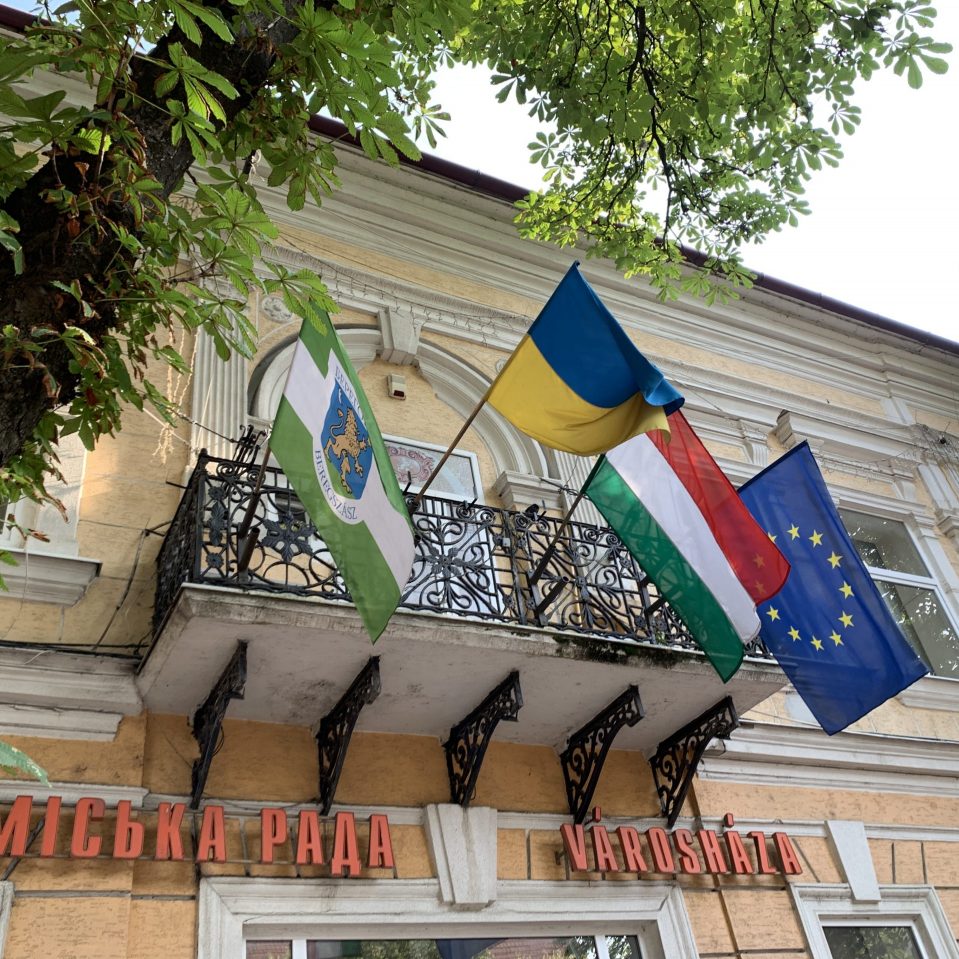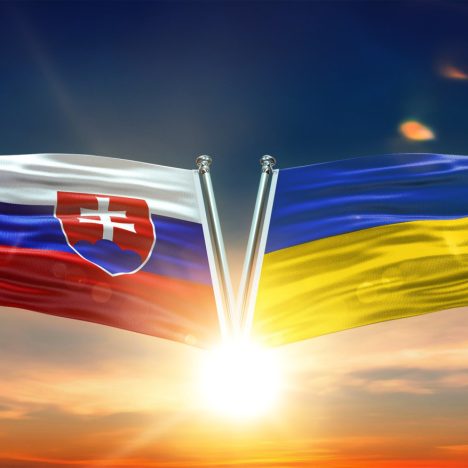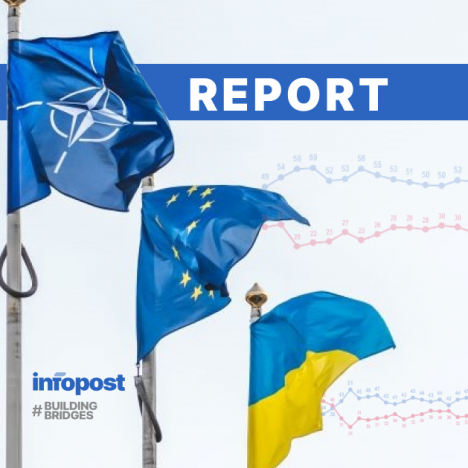The city of Berehove is a border town of Ukraine and is the unofficial center of the Hungarian community in Zakarpattia.
In view of the mass emigration, Hungarians already constitute a minority rather than a majority.
How Ukraine is losing its Hungarian community
According to the census conducted in 2001, more than 48% of the city’s population were Hungarians, while the number of Ukrainians stood at 39%.
Although no official censuses were carried out after that, a few years ago Hungarian scientists tried to count the number of those Hungarians who remained in Zakarpattia.
According to the Summa-2017 project, which was implemented with the participation of the Institute of Geography of the Hungarian Academy of Sciences, the number of ethnic Hungarians living in Zakarpattia has decreased by almost 30,000 over the last 15-20 years. According to the 2001 census in the westernmost region of Ukraine lived almost 152 thousand Hungarians, now their number has dwindled to about 120-125 thousand. Besides the point, this is exactly the figure that appeared in the study “Summa – 2017”.
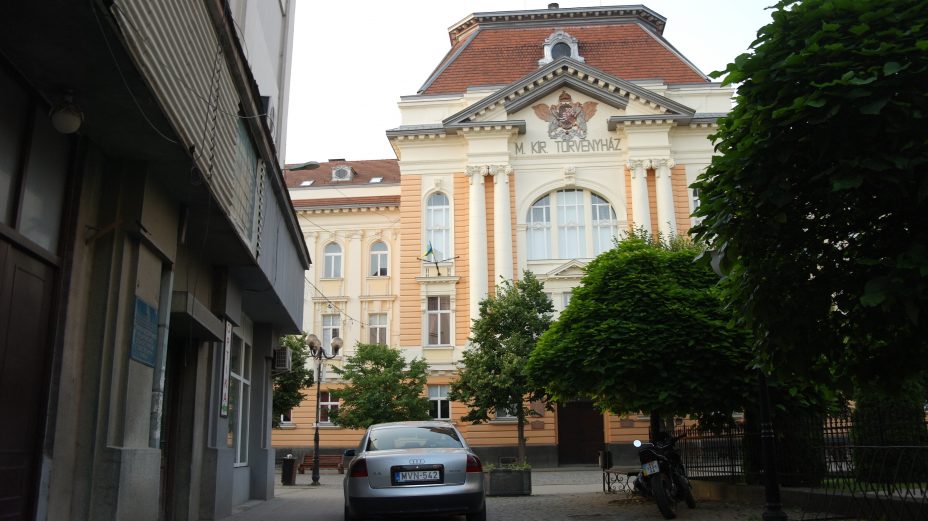
According to researchers, the Hungarian community in Zakarpattia has shrunk primarily due to emigration. Many Hungarians, mostly young people, have left the borders of the oblast and emigrated. Moreover, the largest decrease (by 26-33%) in the number of Hungarian-speaking population occurred in Uzhhorod and Berehove.
Today, Berehove is also the center of a united community, which in addition to the city includes 17 other villages, most of which are inhabited by Hungarians.
They dominated the ethnic composition of the “old” Berehovo district, which was merged with Vynohradivsky last year (with the administrative center remaining in Berehove), and the share of Hungarians in the total population dropped from 76% to 43%.
Hungarian youths do not stay in the cities or villages of Zakarpattia. First of all, in light of the lack of further prospects and work. Even university graduates are faced with a limited choice. They either work in a school, kindergarten (if they reside in the village) or in another state institution, or they engage in farming. A much easier way out is to go to work in any developed country in Europe, which is not difficult provided one has a Hungarian citizenship.
According to the aforementioned study “Summa – 2017”, the Hungarians of Zakarpattia will go abroad for a short time, mainly to Hungary. However, when it comes to spending more than 3 months abroad, the countries of their choice are, first of all, the Czech Republic, Germany and Great Britain.
According to the latest research of the Foundation for Democratic Initiatives conducted in Zakarpattia in 2018 and 2020, in particular according the latest one carried out within the initiative “Re: Open Zakarpattia” of the Central European Strategy Institute, emigration takes place on a massive scale not only among Hungarians in Zakarpattia. Although, it is surely the most popular phenomenon among the national minorities of the region.
Útlevél against forints
For Zakarpattian Hungarians, the procedure of going abroad for work is probably the easiest among all national minorities in the region, which is primarily due to the fact that a new law on a simplified procedure for obtaining Hungarian citizenship came into force in Hungary in 2011.
According to the latest official data released by the Hungarian authorities (in particular, by the Secretary of State for National Policy, Mr. Árpád János Potápi), as of early 2015, 94,000 Ukrainian citizens had obtained Hungarian citizenship.
We are planning to write about how this has happened in the last 10 years in a separate article that will entail all the details. However, to get the citizenship of neighboring Hungary for the average ethnic Hungarian coming from Zakarpattia is quite simple. They just need to prove the roots of their ancestors with any archival document and pass an oral interview. When all is done, the Hungarian passport, or útlevél, will land in their pocket.
However, we are dealing with a paradox here. Viktor Orbán’s team initiated these changes in citizenship legislation with a view to enabling Hungarians living abroad, who found themselves outside their home country after the 1920 Trianon Peace Treaty, to feel an equal part of the Hungarian nation and unite with it in political terms. Part of this unification of the nation also lies in augmenting support for Hungarians living abroad not to leave their historic lands, but to live, work and preserve their culture just like their ancestors had been doing for the last 1,000 years.
However, the easy procedure that makes it possible for the Zakarpattian Hungarians to obtain a Hungarian passport with such ease is almost a key stimulus for emigration, and, first of all, not to Hungary.
According to global passport rankings, the Hungarian útlevél has been ranking among the top 10 strongest passports in the world in recent years. In particular, in the ranking Passport Index 2021 it ranks 5th, along with passports of the Czech Republic, Malta, Poland, Greece and Norway.
Well, what can you say? With the Hungarian útlevél you can travel to the United States without a visa and keep working in the UK even after Brexit.
Grabbing the biggest piece of the pie that affects everyone
Currently, the official Budapest sees no other way out than slowing down the pace of emigration, which means increasing financial support for the Hungarian community in Zakarpattia. According to the estimates of the “Schemy” project, during the period from 2011 to 2020, Zakarpattia received from the Hungarian government of Viktor Orbán almost 36 billion HUF (over 3 billion UAH or 115 million EUR). These were the funds that were invested in the Ukrainian region through the Bethlen Gábor Foundation, i.e. through the only network of Hungarian funds operating in Ukraine.
Currently, there exists practically no area in Zakarpattia where this assistance from Hungary would not be felt in one way or another. These are the construction and reconstruction of schools, kindergartens, support for education, culture, the press, church communities, hospitals. Grants for the assistance of the Zakarpattian Center for Economic Development “Egán Ede” are received by farmers, entrepreneurs engaged in tourism, etc. For example, according to open data, only in 2016-2017, the foundation supported a number of projects amounting to more than 1 billion UAH.
One would logically get the impression that Hungary is practically taking over the functions of the state of Ukraine in the region to a certain extent.
Thus, one can often hear accusations that the roads in Zakarpattia are being constructed with Hungarian money, or that the region is generally more financed from Budapest than from Kyiv. This is a brazen lie, though. For example, last year alone, Kyiv allocated more than 5 billion UAH for the repair of state roads within the region, which is the equivalent of almost 150 million euros.
It is important that a lot of major road repairs should be carried out in the so-called Prytyszyn Hungarian district in places of compact residence of Hungarians along the border with Hungary, where roads had not been repaired for decades.
Consider also the annual state subventions for education, medicine, socio-economic development and funds of the State Fund for Rural Development. Given these data, all speculations that Ukraine does not finance Zakarpattia will disappear without a trace.
In other words, it is Ukraine, not Hungary, that provides critical support to the Zakarpattian region in all spheres, which unfortunately still remains a heavily subsidized region by more than 70%.
Ukraine and Hungary will be able to achieve more should they cooperate
However, such speculations are already turning into disinformation narratives, which look especially frightening against the background of Russia’s aggressive actions in Eastern Ukraine. This is compounded by the difficult social and economic situation in Ukraine and the lack of “significant” state investment in Zakarpattia in places of compact residence of national communities. Thus, an atmosphere of despair, hopelessness and the desire to emigrate is being formed. As well as fears of separatis and forced Ukrainization.
However, the joint efforts of Kyiv and Budapest can constitute an effective tool that, on the one hand, will keep Hungarians (and all residents of Zakarpattia) from emigration, preserve their identity and connection with their native country, and on the other hand, change the attitude of Hungarians to Ukraine, who will be able to look at it as a state in which they want to stay and develop.
Following this constructive logic, we have compiled a list of social and economic issues and challenges that have seemed vitally important for Berehove in recent years. These issues need to be addressed and require significant resources that local government does not have. Most importantly, solving them may present Ukraine with a good chance to prove itself and change its image in the eyes of Zakarpattian Hungarians and other national communities of Ukraine.
All these projects can and should become a common history of cooperation and success of Kyiv and Budapest.
- Berehove belt road.
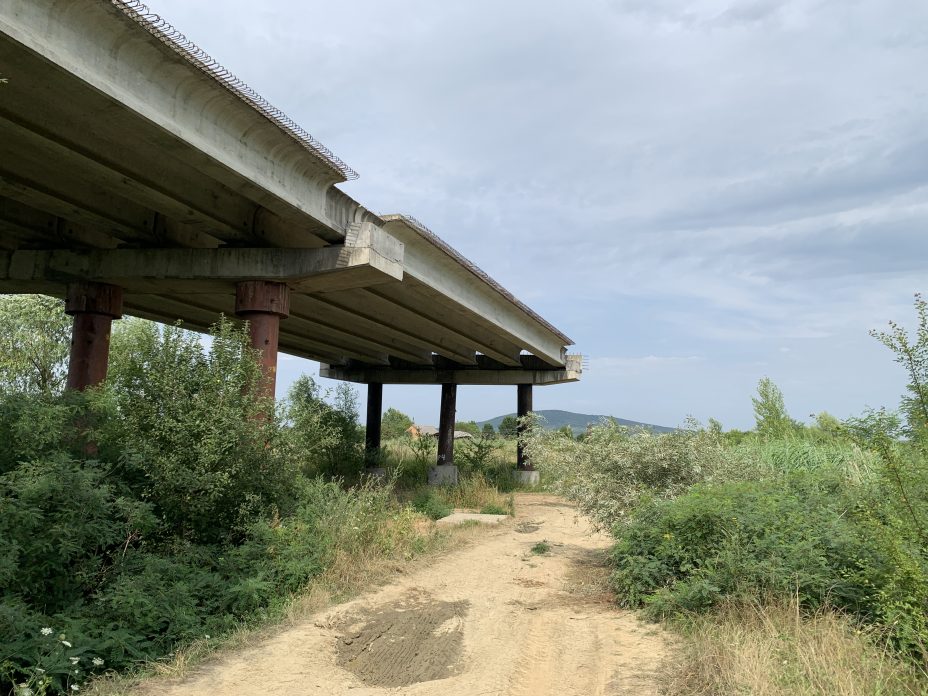
The region has been facing this problem for many years. Yet the government has failed to solve it.
In the future, the belt route around Berehove should connect roads of state importance and lead to international checkpoints on the borders with Romania and Hungary within Zakarpattia, as well as connect the international highway M3 with the main western route of Ukraine, Kyiv – Chop.
Needless to say, this would open additional transit and logistics opportunities not only for Ukraine, but also for Central and Eastern Europe in general, as it regards the development of transport infrastructure within the 5th Pan-European Transport Corridor.
Back in 2016, Hungary announced the allocation of 50 million euros for this belt route and the route from Berehove to Mukachevo, which would actually imply the connection of M3 and Kyiv-Chop. However, the implementation of the project has been postponed for 5 consecutive years, with each of the parties (Ukraine and Hungary) turning it around on one another, as if saying that the delay was not their fault.
In early 2021, representatives of Ukravtodor stated that all the necessary documentation to begin the construction of a large-scale project was prepared and it was about to begin as soon as the issues with the land owned by citizens were solved. In particular, Valery Ivanenko, the adviser to the head of Ukravtodor, convinced the authors of these lines of this fact. However, no announcements about the construction have been made yet.
- The Verke Canal
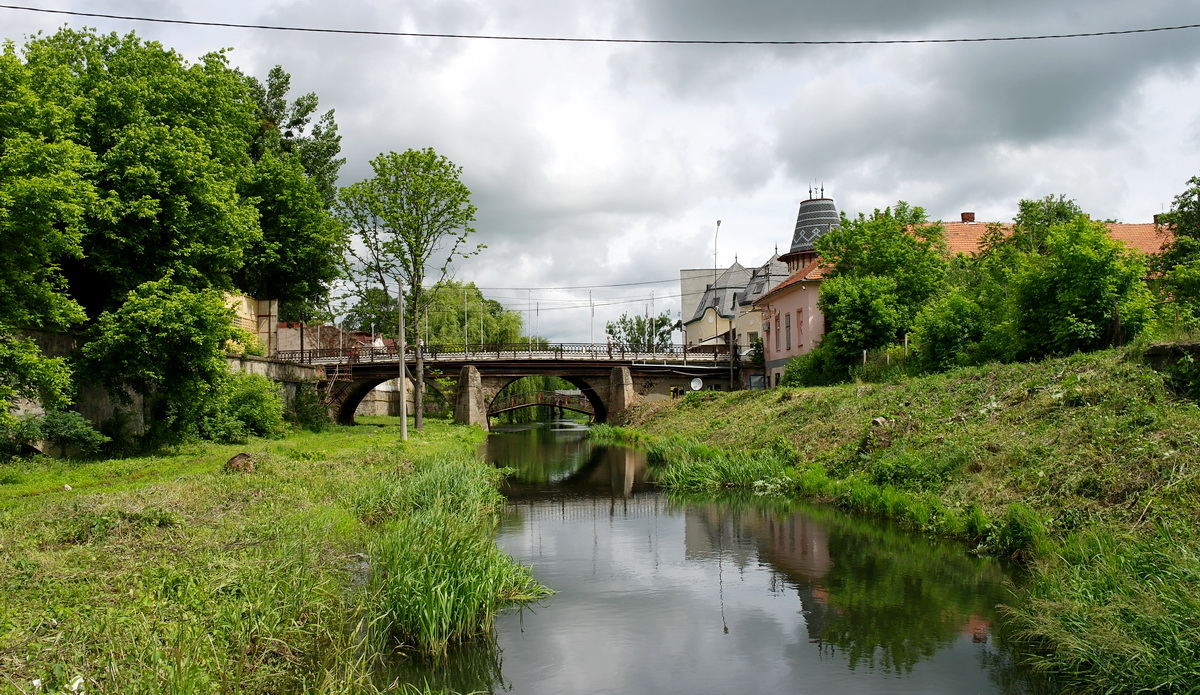
The problem of cleaning the Verke Canal, which is the only waterway in Berehove, has been on the agenda of local authorities for ten years, even longer than the ring road. Quite often Verko is mentioned in the context of the upcoming elections. It is forgotten right after the elections have taken place.
The city has undertaken an effort to clean the canal from meter-long silt and sewage several times on its own. However, it is clear to everyone that the problem cannot be solved by taking complex measures alone. It is difficult to solve the issue without the state support.
Recently, during his stay in Berehove, the Secretary of State of the Ministry of Foreign Affairs of Hungary Levente Magyar announced the decision of his government to provide 3.5 million EUR for the cleansing of the Verke Canal.
The first tranche from the state budget of 389,768,986 HUF (1,081,000 EUR) to cope with the environmental problems of Zakarpattian Berehove has already been allocated. The relevant decree has been signed by the Prime Minister of Hungary Viktor Orbán.
Ukraine could and should join this project, because the cleansing of Verke within Berehove is only part of the problem, since according to water experts, the entire canal, of over 36 km, needs to be cleaned. Moreover, there is a need for a comprehensive solution. In particular, the reconstruction of the existing and construction of new treatment infrastructure for Berehovo and surrounding villages is required, because the canal today is actually an open-air sewer.
- The city landfill
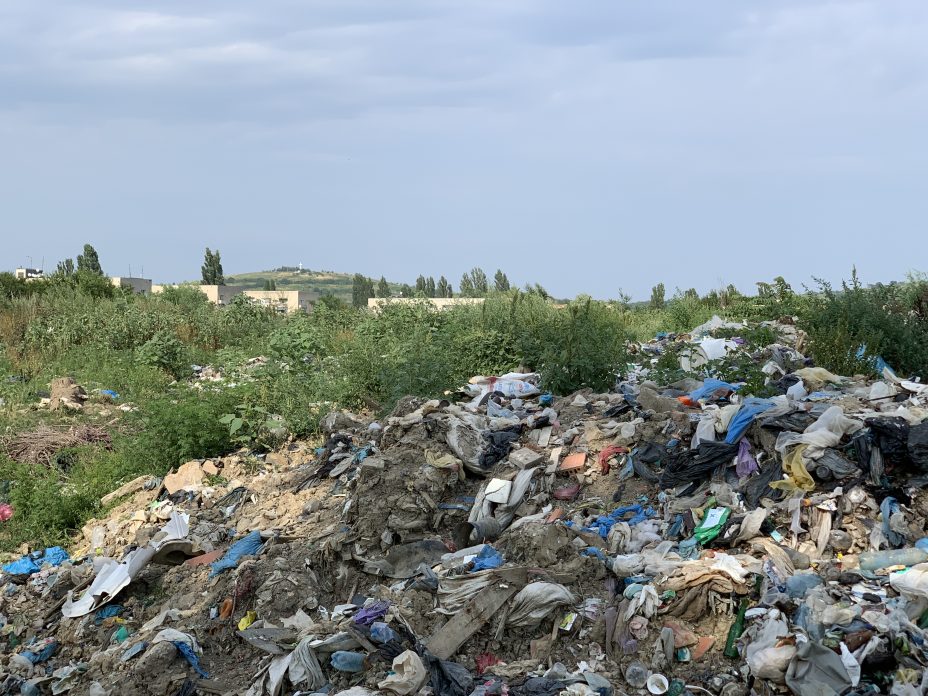
The landfill on the outskirts of Berehove expands its boundaries every year. Its boundaries today almost reach the windows of high-rise buildings in the Berehove neighborhood. Regular fires occur. Garbage is burnt, especially in summer.
During one of such large-scale fires, when a large poisonous cloud covered almost the entire city, fire fighting machines came urgently to the rescue not only from the area, but also from Hungary, since they were dislocated just a few kilometers off the border.
The emergency was resolved a few days later, but the problem remained. To some extent, it was planned to solve it by building a waste sorting plant in the nearby village of Yanoshi. The plant was built with the help of a European grant as well as the assistance from neighboring Hungary. However, the plant has not started functioning. Although, this may happen one day.
However, in addition to the disposal of new waste, it is necessary to rehabilitate the landfill. Such a project would by no means be cheap, either. It is already known that sludge from the Verke Canal will also be transported to this landfill. Therefore, the two problems could be solved comprehensively.
- Cinema
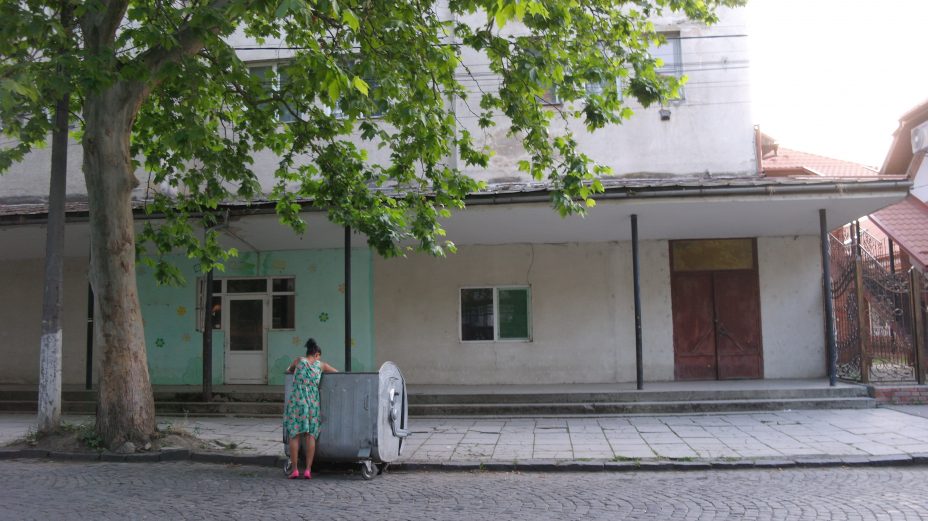
The only cinema in Berehove has not been working for a long time. In order to watch the novelties of film distribution on the big screen, the people of Berehove have to go to Mukachevo. The same goes for watching contemporary Ukrainian movies. It is nearly impossible to do so.
The city community has repeatedly raised the issue of restoring the cinema, which finds itself in a state of disrepair. The city council has several times announced a tender for the lease of premises while maintaining the intended purpose. In other words, the City Council is ready to give the premises to private owners on condition that they resume the work of the cinema, but there are no people willing to bear this burden yet. A new auction has been scheduled for August.
The last time an attempt was made to resume the work of the cinema in Berehove was undertaken in 2007. Unfortunately, for the last 20 years the national movies were shown only once within the framework of the Days of Ukrainian Cinema festival in Berehove in 2018. Such films as “Cyborgs”, “Another’s Prayer” and others were presented. The event was organized by Kyiv Molodist International Film Festival with the support of the Ministry of Information Policy of Ukraine. The one-time event gathered a full hall of the city’s House of Culture.
In principle, the House of Culture can also host film screenings. Moreover, the main concert hall has been renovated in recent years. In particular, 240 upholstered chairs were brought in from Hungary as a gift, the floor covering was replaced and cosmetic repairs were carried out. However, there is no one willing to organize even this kind of leisure activity.
At the same time, in 2021, the Ministry of Culture and Information Policy introduced a program for the development of small cinemas, having also identified five pilot regions, including Zakarpattia. The head of the Zakarpattian Regional State Administration, Mr. Anatoliy Poloskov, said that it was planned to open cinemas in Uzhhorod (as of now the city has 2 private cinemas), Vynohradiv and Rakhiv at the expense of the state.
There are no plans in place to found such a cinema in Berehove, although it would be worth promoting first of all high-quality Ukrainian movies. Currently, Hungarian and foreign films (dubbed in Hungarian) are offered in the film club at the Zakarpattian Hungarian Institute.
- Language courses
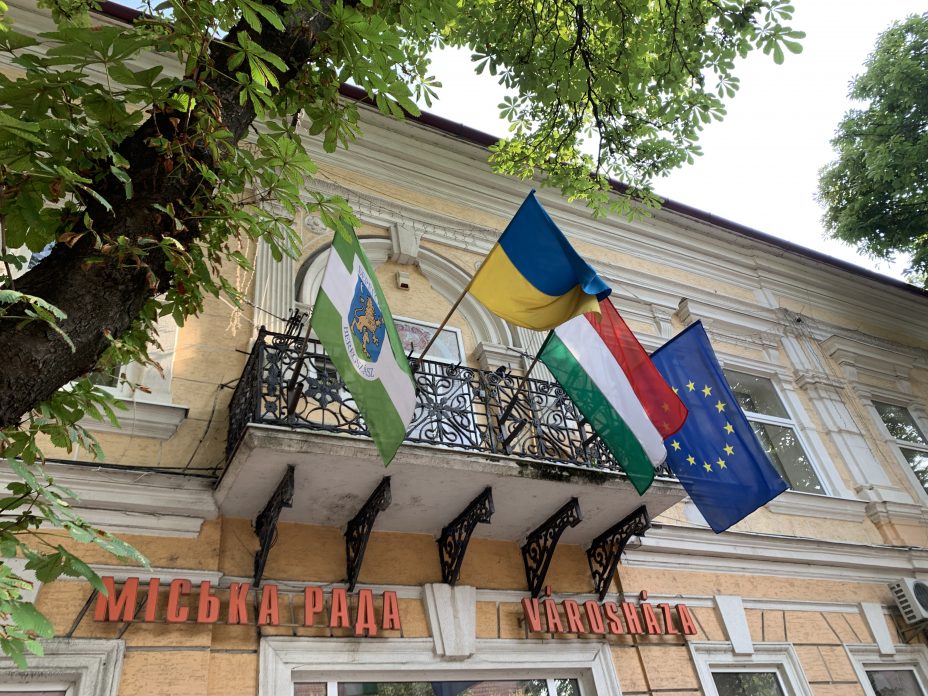
It goes without saying that we are talking here primarily about Ukrainian language courses, the need for which was suddenly felt throughout Ukraine in light of the new legislation on the use of the state language in public spheres, in particular in the field of services.
In particular, on January 16, 2021, the law on language came into force in Ukraine providing for the priority of customer service in Ukraine in Ukrainian. Since that time no complaints have been filed in Zakarpattia regarding violations of this rule of law, according to the language ombudsman’s office.
Moreover, despite the “media popularity” of the language issue related to the Hungarian community in recent years, the Zakarpattia oblast does not rank among the leaders in terms of violations of the language legislation in general.
Although, this year the tourist season in Berehove is in full swing, wirth non-locals taking a rest in thermal resorts. However, the local staff would definitely not reject the opportunity to participate in additional language courses to feel more confident in the Ukrainian language
Surprisingly, back in 2019 the Hungarian government launched Ukrainian language courses in Berehove. That’s right, we have not made a mistake here – the language was Ukrainian. At the same time István Grezha stressed that the project aims to reduce tensions in relations between the countries.
“Given the current situation in the relations between our countries, I proposed to launch Ukrainian language courses for Zakarpattian Hungarians along with the Hungarian language courses for Zakarpattians,” said the Hungarian Minister’s Plenipotentiary.
In just two days after the recruitment was announced, more than 300 Zakarpattians signed up for them. The courses were held on the premises of the Zakarpattian Hungarian Ferenc Rakoczi II Institute. In 2021, the third admission to the courses of studying Ukrainian as a foreign language was completed.
Along with courses in Ukrainian and other languages, large-scale open Hungarian language courses were launched in 2016 on the premises of the Hungarian Institute. Study groups are still active throughout the region. Although the courses are not completely free, many Zakarpattians have enrolled nevertheless. Some need the language for work, others would like to learn it for self-education, and someone is seeking the opportunity to obtain Hungarian citizenship, since without knowledge of the language they are not likely to get útlevél.
Hungarian courses were actively frequented even in the year of the pandemic. In 2021 the 6th admission to the Hungarian language courses started, with a total of 2682 people having enrolled, of which 1741 students possess an elementary command of the language, and 941 already speak Hungarian, but would like to brush up on their knowledge. In total, since 2016, almost 15,000 Zakarpattians have completed these courses.
However, whereas many people conceive of the courses as a tool for going abroad (just like getting a passport) the knowledge of Ukrainian plays an opposite role. Moreover, the key area of business in Berehove district is tourism and services. Despite the new legislation, the Ukrainian language is needed, as mainly these are Ukrainians who visit the region and who are of interest to the Hungarians of Zakarpattia.
Therefore, the Ministry of Education and the Ministry Culture, either on the premises of Uzhhorod National University or Mukachevo Pedagogical College, could easily organize similar Ukrainian language courses for Hungarians.
Ukrainian public figures, such as the First Lady, the President, the Ministers of Education and Culture, celebrities from the show business, and especially musicians (whose songs are sung by Hungarians in Zakarpattia with some of them not even understanding the lyrics), could also volunteer at these courses.
- Luzhanka checkpoint
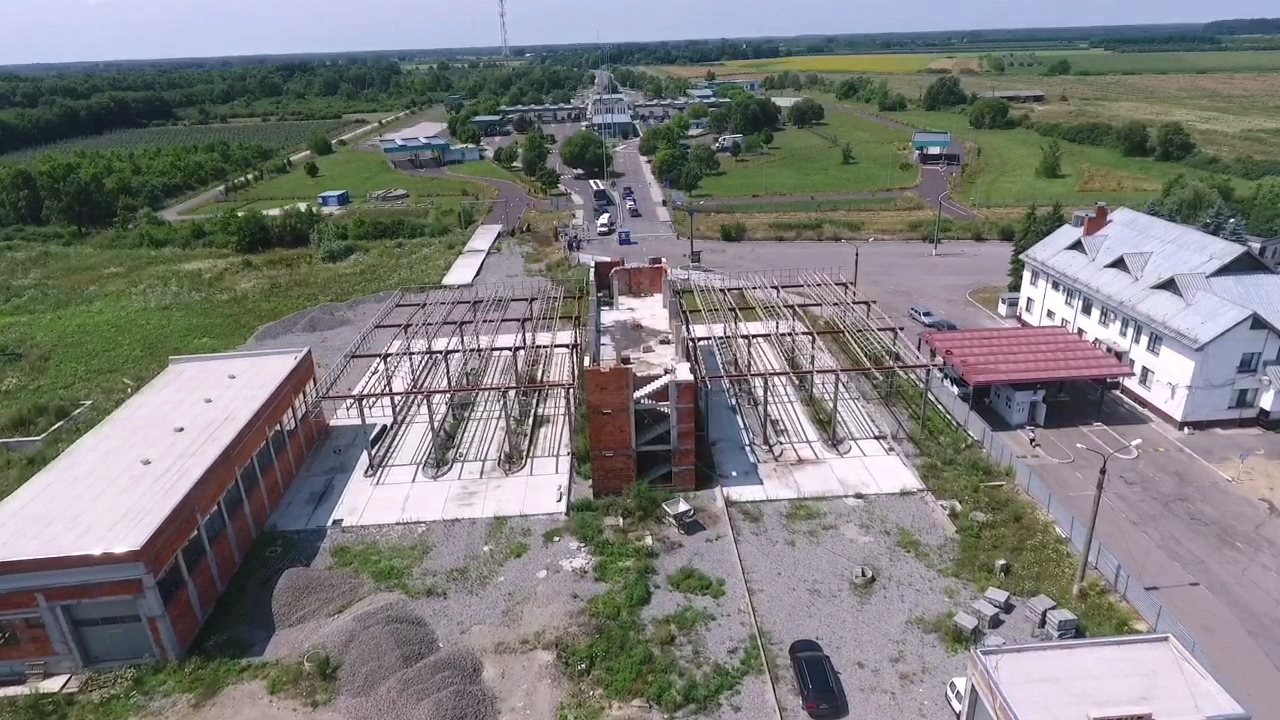
Although between this checkpoint on the Ukrainian-Hungarian border and the town of Berehove there lies the village of Astei, which is part of another amalgamated territorial community, the road used by all travelers runs through Berehove. This town is associated with this checkpoint. For over 5 years it has literally resembled a ruin, which can be clearly seen on the photo.
Reconstruction of the checkpoint “Luzhanka – Beregsurány ” was to be completed with the help of the funds provided by the EU in 2013. Both the Ukrainian and the Hungarian part of the transition were to be constructed. Whereas the Hungarian party completed everything on time, and even constructed the cargo terminal from scratch, the Ukrainian party is still incapable of repeating the counterpart’s success.
Although in recent years it is the Luzhanka checkpoint, not the Tisa checkpoint, that has effectively served as the main checkpoint on the Ukrainian-Hungarian border due to the convenience of the route and the proximity to the M3 highway.
- Urban architecture and infrastructure
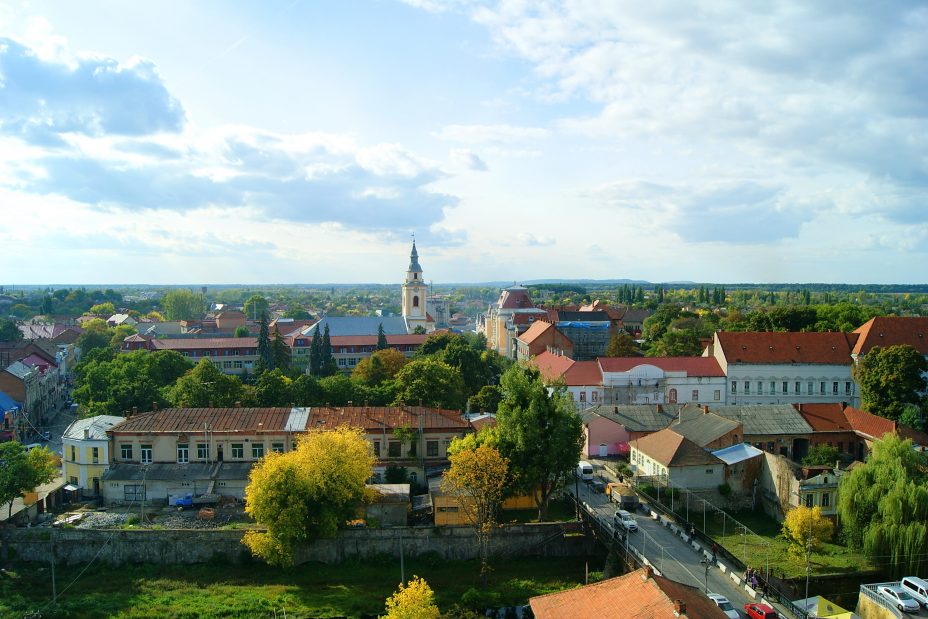
Berehove is a very beautiful and attractive city for tourists. This is facilitated not only by the convenient location (which means transit to European countries), the presence of thermal resorts, but also the unique architectural heritage.
Most of the historically attractive buildings were built in the times of the Austro-Hungarian Empire, in the late nineteenth and early twentieth centuries. Unfortunately, a significant number of architectural monuments found themselves in quite neglected state a hundred years later.
Only with the assistance of the Hungarian government and foreign organizations was it possible to reconstruct many palaces, churches and other buildings in Zakarpattia. In particular, the most beautiful building in the city of Berehove, the former Palace of Justice, where the Zakarpattian Hungarian Institute is now located, was overhauled. Later the surrounding area was arranged here with a campus that entailed a park, gyms and auditoriums.
Currently, with the assistance of Hungary the construction of a sports complex is underway in Berehove. The project envisages a swimming pool and various sports facilities. The former school with Russian as the language of instruction is now being converted into a Hungarian-language lyceum with a focus on sport. The neighboring country is also contributing to this goal.
Every year, Hungary allocates large sums for the reconstruction of local monuments. The Reformed Church, partly Roman Catholic, has been restored, and a Greek Catholic college with a dormitory for 40 people has been built in the former Pushkin Square (now Sinna). Schools and kindergartens are being reconstructed with Hungarian as the language of instruction.
In 2019, the Budapest Park was solemnly opened in Berehove and a horse bronze sculpture of Ferenc Rákóczi was installed also thanks to the funds provided by Hungary. Thus, the neighboring country has joined the city’s infrastructure.
We would also like to add that even the construction of the monument of Taras Shevchenko, unveiled in 2016 in the park near the secondary school Nr. 5, was made possible with the help of Hungarian money. Due to the lack of the required sum in the city budget, Hungary decided to finance the monument despite the fact that the city community had been raising funds for its construction for a long time.
Such financial support from Hungary additionally makes it possible to compensate for the very modest funds that Berehove possesses in its own development budget. This year the budget amounts to 14-15 million hryvnias.
For instance, even this whole some will not suffice for the construction of a new main water supply, which the city has been in a critical need of in the last few years due to the deterioration of the existing one. As we were told in the City Council, the project would require 20 million UAH and it could be easily financed by the funds from the State Fund for Regional Development of Ukraine.
At the same time, it should be noted that the renovated reception department of the Bertolon Linner Hospital in Berehove has recently been opened. It had previously been reconstructed at the expense of the state budget. Also, Ukraine and Hungary could really join their efforts to finally complete the construction of the second building of this hospital, which has already turned into a classic long-term construction.
***
Actually, everyone would benefit from the joint effort of Kyiv and Budapest in each of the aforementioned areas. In fact, such efforts would go in line with the strategic interests of both countries.
Authors: Andriy Klots* and Dmytro Tuzhanskyi exclusively for InfoPost.Media
* this the journalist’s creative alias. He has been writing about interethnic relations for quite some time. He uses the nickname so that his name does not affect the quality and sincerity of the discussions that ensue after the publication of the author’s articles. (Chatham House rules)
Photo credit: InfoPost.Media

